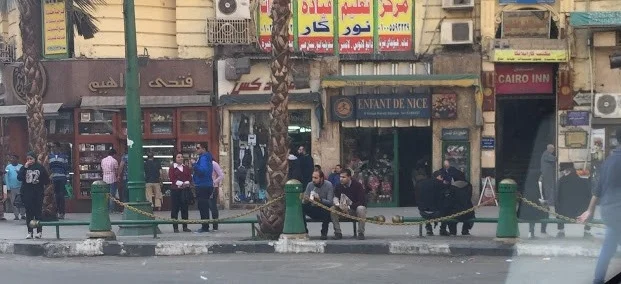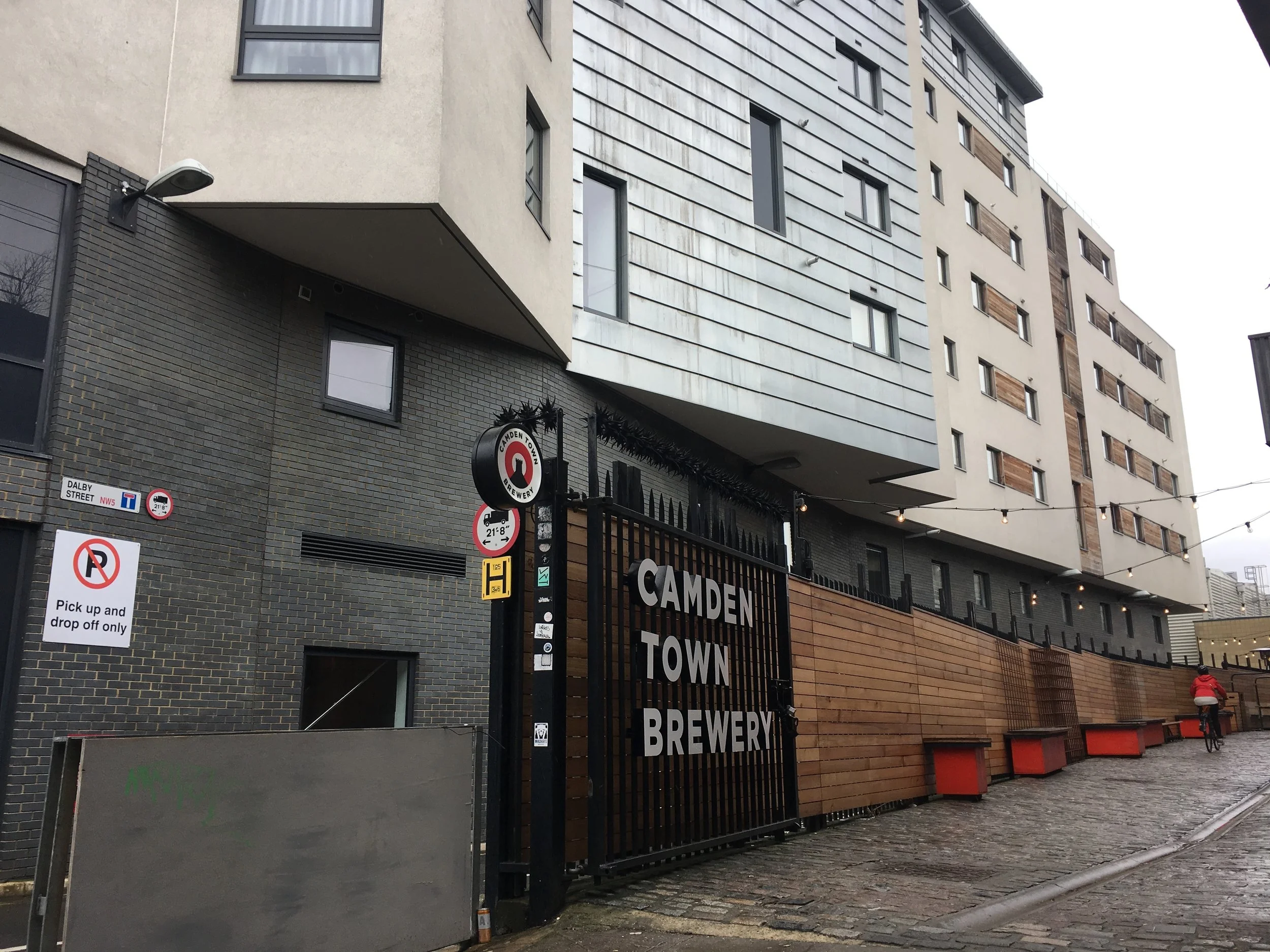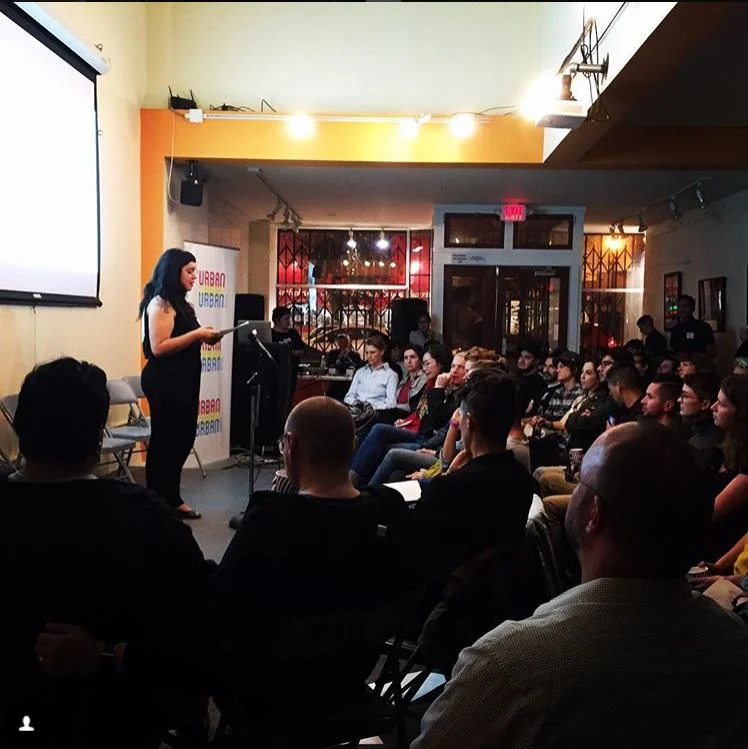Disaster Response and Recovery in the United States
By Reanna Tong
Just when 2017 was rounding out with Hurricanes Harvey, Irma, and Maria and the Northern California fires, December came with another disastrous fire in Southern California. The United States and its neighbors are no strangers to hurricanes and fires. But a combination of years of climate change impacts on land, land use patterns, community preparedness, and unprecedented concurrent disasters led 2017 to be the most expensive year on record for disaster response and recovery in the United States and its territories, costing a total of $306 billion in damages. (1) The Federal Emergency Management Agency (FEMA) was stretched beyond capacity and local and state governments relied upon the assistance of surrounding communities to aid in response and recovery. As communities continue to rebuild, important decisions that need to be made in the years to come will require reflection upon our experiences in 2017.
Locations of climate disasters in the United States during 2017 (Photo: NOAA)
What did 2017 teach us about our ability to respond to disasters and will our governments at its various levels make adjustments accordingly? Beyond the government’s response, will private practices reconsider their current operations? Consequently, will community members and organizations take on more of a role in disaster preparedness, response, and recovery?
Hurricanes Harvey, Irma, and Maria
Land Use, Zoning, and Development
The first of disastrous hurricanes to hit US territory was Hurricane Harvey in August 2017. The financial impact of Hurricane Harvey on Houston became the costliest of 2017’s disasters. (2) Since then, planning professionals have questioned and analyzed whether Houston’s lack of zoning and regulation contributed to the severity of flooding in the area. Physical and structural conditions are (sometimes) reconsidered following a disaster. Take for example, Superstorm Sandy in New York City - another costly disaster to the United States, both financially and socially. Following the damage, New York City began to reconsider physical and structural changes, such as building berms, wetlands, and pervious surfaces in order to decrease the severity of future flooding.
Flooding in Houston from Hurricane Harvey on the left and from Superstorm Sandy in New York City on the right (Photo: AMNY)
Similarly, Houston’s current lax regulation, which allows for large swaths of impervious surfaces, has been criticized for exacerbating flooding severity. Many surfaces that can act as stormwater mitigation, such as wetlands and prairies, were paved over for sprawling development with large setbacks and parking areas, causing a 30 percent loss in wetlands. (3) However, a counter-argument has developed that suggests no amount of planning and regulation could have decreased the severity of flooding from such a massive hurricane. (4)
For many disaster-prone areas, the question continues to be whether cities and jurisdictions are taking enough initiative to mitigate the impact of future disasters, either by better regulating development or discouraging development in these areas, or encouraging more thoughtful development elsewhere.
(Photo: US News/Steve Breen/Creators Syndicate)
FEMA
As FEMA concentrated on providing response efforts to the areas of Houston, Florida, and Puerto Rico, destructive and fast-moving fires sprung up in California. Governor Jerry Brown of California declared a state of emergency due to the severe impact of the fires. According to FEMA staff, the agency was still under-sourced at the time and focused on helping with efforts in hard-hit Puerto Rico and the Virgin Islands. Staff were then moved away from these areas to support fire response in California. FEMA is considered to be an agency of last resort in its structure and operations. If a local municipality or state does not have the resources to respond, only then does FEMA step in. In the case of the California fires, it may not have been necessary for the state to receive immediate FEMA attention, especially if this meant pulling resources from significantly underserved and under-resourced United States territories. Many different sources seem to agree that certain disaster-struck areas of the US received more attention and aid from the government than warranted, especially considering drastic differences in infrastructure, finance, and professional resources.
Entire communities and apartment complexes that were built together were also subsequently destroyed together in fire-prone areas of California. The growth of residential development in fire-prone areas should not come as a surprise in a state with a shortage of affordable housing. The state declared a housing crisis when 15 housing bills were signed by Governor Jerry Brown in September 2017. (5) Many of these bills fast-tracked the development process and loosened development requirements. Despite the strain that wild and man-made fires put on California, the government has taken few steps toward restricting development in this areas. In fact, following such fires, the state allows the rebuilding of structures where they previously stood in addition to the construction of new buildings in the same areas, increasing the potential number of affected people with each disaster.
Spectrum of post-fire response policies from the US Forest Service Wildland-Urban Interface study (Photo: APA)
The United States Forest Service conducted research around the Wildland-Urban Interface (WUI) and rebuilding after wildfires to better understand how local governments and communities respond to planning and development in areas susceptible to wildfires. (6) Similar to flood and hurricane disasters, a question that arises after fires is how developmental patterns and policies will change in these hazard-prone areas, recognizing that allowing and encouraging development in these areas may exacerbate the situation for years to come. After studying fire-prone areas around the United States, the study found that although not everyone rebuilds in the same fire-prone areas, jurisdictions are taking insufficient steps to discourage new development or rebuilding efforts. Unfortunately, this is largely driven by the affordable housing crisis that continues to dominate political discourse.
Changes to post-fire response policies in study areas affected by fires from the US Forest Service Wildland-Urban Interface study (Photo: APA)
The study also found that post-fire response occurs across a wide spectrum, from programs that are more volunteer-based to those that require planning and regulatory changes. It turns out that volunteer-based response remains stronger and easier to relay. The most noticeable adjustments to post-disaster response among the studied areas is increased efforts to provide resources for suppression and emergency response. Many people who live in hazard-prone areas accept the risk of disaster and simply take the necessary long-term steps toward protection, such as having homeowners insurance.
Moving Forward
FEMA Policy
Moving forward, FEMA and the federal government's approach to long-term policies will have to change. With an initial lack of support for Puerto Rico and the diverting of aid from Puerto Rico to help with California’s fires, one FEMA staff-member asks how we can use the disaster and resources in Florida to help the residents who are fleeing Puerto Rico in droves. The agency should rethink how resources going to Florida, and even to California, could instead help Puerto Rican residents who are not getting support. Although this past year has been one of the few times that the US has had to face disaster recovery in territories beyond the continental US, 2018 and the years to come should be used strategically to make adjustments in distribution of resources, planning for multiple concurrent disaster scenarios, and financial assistance policies.
Land Use, Zoning, and Development
At the same time, local jurisdictions located in disaster-prone areas should also weigh the costs and benefits, the necessities, and the priorities of their land use, zoning, and development decisions. In Houston, the city should take into consideration how regulations might help reshape the city to be more resilient against future disasters. Less restrictive regulations may allow for an easier and quicker rebuilding process; more developmental requirements, such as mitigation for loss of permeable surfaces, may respond better to future storms.
In California, Wildland-Urban Interface areas may continue as many other areas have after major fires: increase education and adjust vegetation management and building standards. Another route that these WUI’s can take is by looking to Colorado’s Planning for Hazards guide for planning tools and strategies to reduce potential risk from fires. (7) The toolbox includes developing a Community Wildfire Protection Plan (CWPP), which brings the community together to assess current and future housing conditions relative to wildfires. Beyond the typical CWPP, strategies also include providing incentives, such as density bonuses and transfer of development rights (TDR), to cluster development in particular parts of counties that are less susceptible to fire.
This year is an opportunity for communities to reexamine existing policies and conditions and determine whether they are willing to accept the cost and benefits, act upon or beyond necessity, and accept the proposed priorities.
Excerpt from Colorado's Applicable Planning Tools and Strategies for Planning for Wildfire Hazards (Photo: Planning for Hazards)
Cost
The disasters in the United States and its territories accounted for nearly half of all insurance payouts around the world. (8) Rebuilding after each disaster takes an economic toll when communities borrow large amounts of money to rebuild and drive up the cost of credit, even across the country. (9) If jurisdictions continue to allow development in hazard-prone areas, will insurance companies also continue to pick up the bill on these disasters? (Remember: homeowners insurance covers fire damages while special flood insurance covers flood damages)
Prior to the creation of the National Flood Insurance Program (NFIP) in 1968, flood insurance had gone through multiple iterations of policies and strategies, including being completely offered by private insurers. These private flood policies then became increasingly rare following floods that contributed to major losses. (10) As a result, the NFIP now offers flood insurance as a partnership between private insurers and the federal government. A colleague at FEMA anticipates that fire insurance will make a similar shift in insurance providers from private to public (or a hybrid) as communities continue to build and rebuild in high-risk areas. A current FEMA administrator has already suggested reducing the federal government’s involvement so that private insurers price risk more accurately and discourage building in high-risk areas. (11) The decision would have to come from Washington to see whether to continue supporting people who live in these communities or not. For now, homeowners in high-risk areas will continue to have the option of coverage through private insurance or a state-sponsored program that partially covers damages. (12)
Community Organizing
One of the biggest fires to spread and cause massive destruction in California was the Oakland Hills fire of 1991. Not so different from the most recent Northern and Southern California fires, the Oakland Hills fire spread quickly, burning 2,500 homes and killing 25 people. The City of Oakland responded by adjusting vegetation management and home building materials standards. Residents and community members responded by forming “phoenix” groups. (13) These groups set up meetings with insurance companies, contactors, and city planners to aid in the rebuilding process. Residents advocated for implementing changes to better protect their homes and the surrounding spaces, including educating others and improving fire safety practices. (14) Designated representatives of these groups attended City Council and Planning Commission meetings to learn about reconstruction.
Community pooling of resources and information-sharing has come a long way since the 1991 fires. Many resources are now available to assist victims with places to stay. FEMA information is easily accessible and local assistance programs are widespread. (15) In fact, victims of destructive disasters have found the presence of community organizations and localized recovery programs to be the most accessible and useful resources. Due to the severity, timing, and magnitude of the 2017 disasters, more efforts and resources from across the country should be pooled to bring these community organizations and programs to greater capacity in anticipation of future disasters.
WashingtonPost. (2018, January 8). Weather disasters cost U.S. $306 billion in 2017. Retrieved January 15, 2018, from http://buffalonews.com/2018/01/08/2017-is-most-costly-weather-disaster-year-in-u-s/
Mooney, C., & Dennis, B. (2018, January 8). Extreme hurricanes and wildfires made 2017 the most costly U.S. disaster year on record. Washington Post. Retrieved from https://www.washingtonpost.com/news/energy-environment/wp/2018/01/08/hurricanes-wildfires-made-2017-the-most-costly-u-s-disaster-year-on-record/
Hurricane Harvey: Houston’s flooding made worse by unchecked urban development and wetland destruction — Quartz. (n.d.). Retrieved January 15, 2018, from https://qz.com/1064364/hurricane-harvey-houstons-flooding-made-worse-by-unchecked-urban-development-and-wetland-destruction/
Land Use Wasn’t to Blame for Houston’s Hurricane Harvey Destruction | Economic Intelligence | US News. (n.d.). Retrieved January 15, 2018, from https://www.usnews.com/opinion/economic-intelligence/articles/2017-09-18/land-use-wasnt-to-blame-for-houstons-hurricane-harvey-destruction
Dillon, L. (n.d.). Gov. Brown just signed 15 housing bills. Here’s how they’re supposed to help the affordability crisis – Los Angeles Times. Retrieved January 15, 2018, from http://www.latimes.com/politics/la-pol-ca-housing-legislation-signed-20170929-htmlstory.html
The Wildland-Urban Interface and Rebuilding after Wildfire. (n.d.). Retrieved January 15, 2018, from https://www.planning.org/tuesdaysatapa/2017/dc/dec/
Wildfire | Planning For Hazards. (n.d.). Retrieved January 15, 2018, from https://www.planningforhazards.com/wildfire
Mooney, C., & Dennis, B. (2018, January 8). Extreme hurricanes and wildfires made 2017 the most costly U.S. disaster year on record. Washington Post. Retrieved from https://www.washingtonpost.com/news/energy-environment/wp/2018/01/08/hurricanes-wildfires-made-2017-the-most-costly-u-s-disaster-year-on-record/
Mooney, C., & Dennis, B. (2018, January 8). Extreme hurricanes and wildfires made 2017 the most costly U.S. disaster year on record. Washington Post. Retrieved from https://www.washingtonpost.com/news/energy-environment/wp/2018/01/08/hurricanes-wildfires-made-2017-the-most-costly-u-s-disaster-year-on-record/
Read “Affordability of National Flood Insurance Program Premiums: Report 1” at NAP.edu. (n.d.). https://doi.org/10.17226/21709
Sisson, P. (2017, August 29). How extreme weather risk is creating a real estate insurance disaster. Retrieved January 15, 2018, from https://www.curbed.com/2017/8/29/16218468/hurricane-harvey-flood-insurance-wildfire-climate-change
Lazarus, D. (n.d.). As California burns, here’s what you need to know about fire insurance – LA Times. Retrieved January 15, 2018, from http://www.latimes.com/business/lazarus/la-fi-lazarus-fire-insurance-20171011-story.html
North Bay fire survivors face long recovery, rebuilding. (n.d.). Retrieved January 15, 2018, from https://www.mercurynews.com/2017/10/15/oakland-hills-firestorm-survivors-to-north-bay-youre-not-alone/amp/
North Hills Community Association. (n.d.). Retrieved January 15, 2018, from http://www.northhillscommunity.org/our_story.php
Northern California fires: List of resources for victims, ways to help | The Sacramento Bee. (n.d.). Retrieved January 15, 2018, from http://www.sacbee.com/news/state/california/fires/article180136626.html





